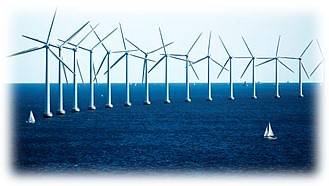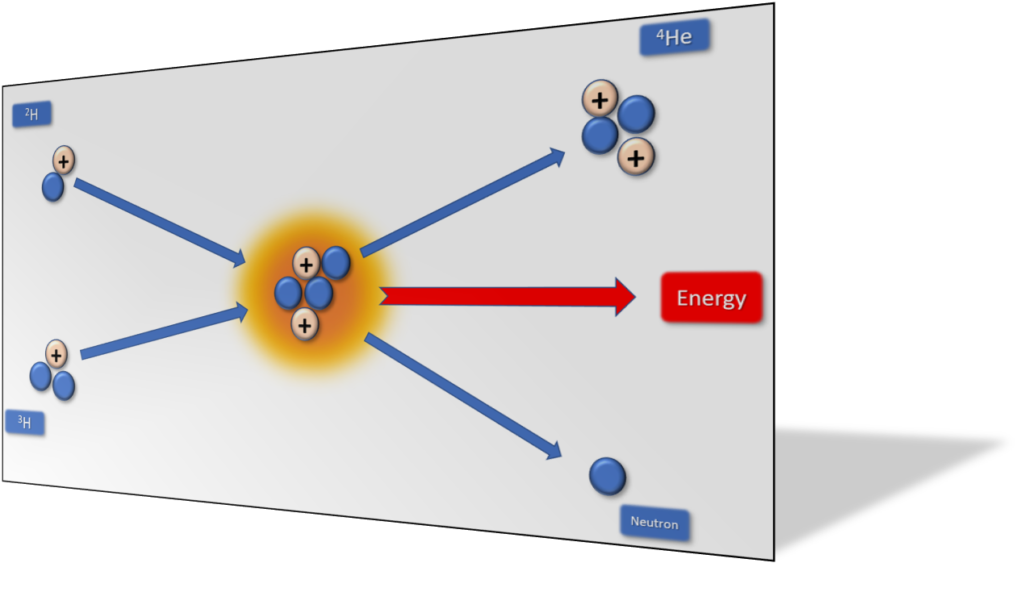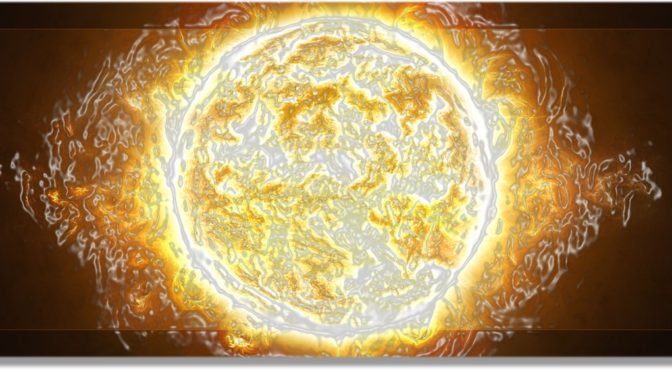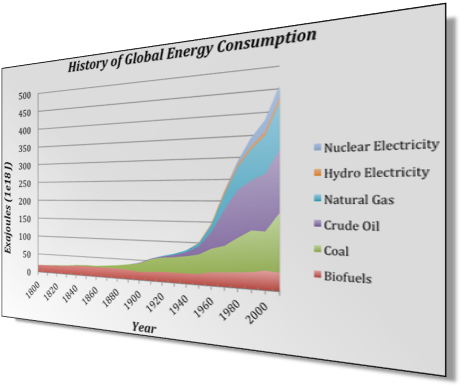“We choose to go to the Moon! We choose to go to the Moon…We choose to go to the Moon in this decade and do the other things, not because they are easy, but because they are hard; because that goal will serve to organize and measure the best of our energies and skills, because that challenge is one that we are willing to accept, one we are unwilling to postpone, and one we intend to win, and the others, too.”
John F Kennedy – Sept 12, 1962 Rice Stadium, Houston, Texas
It’s all about Mass Defect. Remember that. We’re going to need that later in this one. Mass Defect and Einstein. That’s the magic in this article.
When I was a child, my Dad would wake me in the middle of the night and take me out into the garden. On those cool, dark evenings he would say, “Look at the stars“, and I would look up at the heavens rubbing bleary eyes. It wasn’t random. He would wait for those nights where the sky was cloudless, at it’s darkest and when the Milky Way was laid out in all her majesty. When I moved to the city, I discovered that you can’t really see the stars. There’s too much light. But up North, where we lived, and where everything is better (it just is, so get over it), it seemed like you could see them all. Great clouds of stars that make up our galaxy.

My Dad was in the Royal Navy during WW2. He was a navigator. He had been trained to navigate by the stars, so he knew their names and the names of the constellations, and he would try to teach them to me. Cassiopeia, Ursa Major and Ursa Minor with Polaris, the North star, hanging off its tail. The Dog Star, Sirius, shining brightest on the sniffing nose of Canis Major. So many, but he seemed to know them all.

But he wouldn’t just show me the cosmos, he would tell me all about it too. I was 7 or 8, so a lot of what he said I really struggled to get my head around. He told me that the universe was 14Bn years old, and that there were more stars in the sky than there were grains of sand, on all the beaches, in all the world. He told me that when we looked at a star, we were looking back in time. The star was so far away that the light from it could take thousands, or millions, or even billions of years to reach our eye. When the light hits our eye, we are seeing the star the way it was thousands, or millions, or billions of years ago. It might not even be there anymore.
But he shared a lot more.
He told me our nearest neighbouring star system Alpha Centauri was about 4 light years away so it would take us 4 years travelling at the speed of light which was 186,000 miles per second to get there but it was impossible for anything with mass to travel at the speed of light because when you go faster your mass increases and so you need more energy to go even faster and when you go faster your mass increases and then you need more energy to go faster and by the time you get close to the speed of light you would have close to infinite mass and so it would take all the energy in the universe to go the speed of light and that didn’t make any sense did it and what was funny (lol) was that as you went faster time went slower than if you are just standing still and that’s nuts but for someone travelling to Alpha Centauri at the speed of light which was impossible because of the whole mass-energy thing it would only feel like 2 weeks there and two weeks back but here on earth 8 years would have passed for everyone and that was called time dilation and ooh gravity isn’t a force like people say it is “that’s the force of gravity that is” it’s actually the curvature of spacetime and spacetime curves around anything that has mass from a particle to a star or a black hole just like a bowling ball would bend the fabric of a trampoline if you put the ball in the middle of the trampoline but in all directions and that everything that has mass creates a curvature in spacetime and things that have less mass and that get close enough just fall into the gravity well of the thing with more mass and it looks like it’s being pulled but actually its just falling and we call that gravity and so that’s freaky isn’t it?


He also told me that our Sun was just another a star, and honestly I was surprised but at the same time, knew it had to be true. So all those pin pricks of light, scattered across the velvet black of night, were just the same as our Sun? Yes. Give or take. But all of them, every single one of the 1 billion trillion stars in the universe, worked exactly the same way, and the way they worked was called Fusion, and gravity makes fusion happen in a star.

For years, that was where I left it. That was the sum total of my knowledge of Fusion. A word and process that carried no meaning or understanding, just something I associated with how the Sun produced its energy without actually knowing how. At the risk of lumping everyone into the same dumb-shit basket of ignorance as myself, I would argue that pretty much everyone else has done the same.
“But why do you keep talking about Fusion Creasy? Why? Why?”
Fair question, and one which deserves an answer before we all take a deeper dive into how Fusion works. Yes, we are going to do a deeper dive, so ping the bell, and get off right here, if you don’t have the stones to follow me down this particular black hole.
And that’s like, a really good analogy? Because like, while I was writing this? It like, felt like there was no way out?
In the last 51 years, our energy consumption has spiked. Big Time. Our consumption has increased relative to population growth. Unsurprisingly, given that the vast bulk of our energy has been created by burning Coal, Oil and Natural Gas, CO2 emissions have also grown steeply, and now look what we’ve done. We’ve only gone and started the whole climate change thingy, or loike, the sixth extinction event or sommat!
There is some good news though. According to a report by McKinsey “Global Energy Perspective 2019“, energy demand will slow down and plateau around 2030, albeit Africa and India’s energy demand will double by 2050 in line with their predicted population growth and industrialisation. In addition, the mix of supply will shift in favour of renewables, so that by 2035, renewables will make up about 50% of the mix.
More good news! The CO2 emmissions are forecast to fall by up to 20% by 2050! Unfortunately, even with McKinsey’s lower energy demand forecast, which I’m not really bought into, a better outlook for the uptake of renewables and lower CO2 emmissions, we will still be on a pathway for a greater than 2 degree oC increase in global temperatures by 2050.

The scientists are telling us that we are out of time, and whilst ordinarily I might take that with a pinch of salt and file that particular nugget in the drawer marked “For my kids to solve”, the other day I got a letter from my water supply company calmly telling me how to preserve water now because climate change meant that we should expect hotter and hotter summers and so less and less water. Not in a few years time mind, right now.

Antarctica has just experienced its highest temperature on record at 18.3 oC . The Thwaites Glacier in Antarctica, a glacier the size of Great Britain, is currently melting much faster than expected and will, on its own, produce enough melt water to raise global sea levels by half a meter. If the Western Antarctic Ice Sheet melts completely sea levels will rise by 3.2 meters. I don’t need to tell you how much it will rise if all the ice melts in Antarctica. Ok I do. It’s 61 meters!

That last scenario is a bit out there in terms of probability given the average temperature of -37 oC , but even with the 3.2 meter scenario you can wave goodbye to all those holidays in the Maldives readers. Oh, you haven’t been? Seriously, you should go. It’s amazing. Go soon, because they will be beneath the azure waters of the Indian Ocean in a few years. I would recommend the W or Conrad at Rangali, as the reefs and everything there are just spectacular.
Whilst losing the Maldives is clearly a worry, the likely displacement of 3bn other people, who have foolishly chosen to live at the seaside around the world, might just be more worrying. They aren’t going to give up the ghost and just be washed away in the flood are they? No these 3bn folks will have a bit of warning the flood is coming, and they’ll buy boats, or make a great Ark! They’ll think they can stop the flood! Miami is doing a pretty good impersonation of King Canut by spending a fortune on shoring up its sea defences, but one can’t help feeling that the ‘gators are going to be kickin’ it in the clubs of Miami soon. So where will all these people go once the oceans, unstoppably advancing, wash through the streets of New York, London, Miami and Los Angeles? Paris and Rome would have really worked well here instead of Miami and Los Angeles, but they’re not coastal.
WORK WITH ME CITIES! WORK WITH ME!
All these people are going to move inland to where we, the sensible folk, are. Prices will increase, as everything from housing to food will become less available. What do we do when we are competing for resources? Well, those of us with big guns go and kick the bejesus out of the people with little guns, and then we take all their shit.
On top of all this, our population is set to keep growing (“Shouldn’t We Weaponise Babies“). Extreme population is the central pillar of climate change. It is the driving force behind higher resource consumption. All the resources we consume require energy to produce or provide. So despite what McKinsey say, the predicted growth in population to ~10bn by 2050 WILL net-increase demand for energy. However, I agree that as we increasingly move to renewables, the CO2 emissions will fall, but at what rate and what’s our plan to scrub existing CO2 from the atmosphere?

If we wanted to stop burning fossil fuels tomorrow, to radically and rapidly reduce CO2 emissions, we could. It would mean a return to the stone age, but we could do it. Not really practical though is it? We just can’t build enough efficient renewable supply, to quickly replace the energy provided by fossil fuels though. Even if we could, I don’t think we should be tacking around ocean based wind farms just to get a look at the horizon. Whatever we do has to be practical and allow us to live in a world without these scars.

We could increase our use of Fission based Nuclear power massively, but we have all heard about the Three Mile Island, Chernobyl and Fukushima disasters. The idea of our power stations melting through the centre of the earth whilst dosing us, and our food supply, with high levels of deadly radiation, understandably, frightens us. Going down this route also gives us a multi-millennial, and dangerous, waste problem that nobody wants. But, a lot of energy providers want to go there because it is a comparatively clean, and reasonably long term, solution to fossil fuels. I know because I did work for some of the big ones, and saw the forward plans that include more Fission.
Also, once we choose to go down a particular path, we have a tendency to stay on that path until it’s all used up. I give you fracking. I think the same genius that came up with the US constitution and the electoral college system came up with fracking. Having sucked up all the easy oil and gas, what do we do? We drill down beneath the water table and go breaking up the shale to release the hidden, and hard-to-get, oil and gas. All the while your corporate douche at the top is saying “It’s impossible for the gas to penetrate the water table”, whilst drinking a glass of on-fire-water from the local tap. A few earthquakes in Preston and the same douche is still fighting for the right to keep doing it.
We will go to insane lengths to stay on the fossil fuel path. If we push down the more fission route, it’s going to take a long, long time to “use up”, and while we are using it up we will be burying a lot of waste and living with the inherent risk of fission power station accidents. For these reasons, and because the more fission we do the less reason we have to spend all the money on fusion, I vote that we spend not another penny on fission power plants, and decommission the one’s that are still working.
What about Hydrogen though Creasy?
OK, fair point. On the face of it, Hydrogen looks hopeful. It’s clean, abundant and relatively safe, and merits more investment for certain applications. I would say transport in particular, as hydrogen fueled cars can be refueled in the same time it takes to fuel a petrol driven car, which I still think is a major barrier for mass take-up of pure electric vehicles. However, producing high volumes of hydrogen from it’s primary source on earth, water, is both expensive and energy inefficient (i.e. use almost as much energy to produce as you get from the hydrogen). Further, burning this kind of hydrogen, in large quantities, in power stations, to make electricity doesn’t make any sense, when we could fuse tiny quantities of hydrogen isotopes and get way more energy.
It’s time to rapidly move to a new, viable, clean, safe, economic and globally abundant fuel source that completely replaces fossil fuels and meets our future primary energy needs.
Only one solution ticks all of these boxes and it’s Fusion. So let’s make it’s acquaintance and then together, make an informed decision, to go spend all the money on it.
I want you to stay with me now. I promise you, you will feel better once we have been through this experience together, and it will bring us closer together in the “Shouldn’t We” family.

Now obviously, I’ve know all about Fusion for years. Way before I ever came to write this post. Some might call me an expert in the subject, but I couldn’t possibly comment. It’s a gift really.

I certainly didn’t research the subject to death, just in case any reader of this blog (and it probably will be singular), asked me a question about the subject and showed me up for a complete and utter charlatan of the worst order. Nope. Known all about it for yonks.
Do you remember right at the start I said it was all about Mass Defect and Einstein?
Pop quiz.
Hands up everyone who has heard of E=mc2? Ok, getting a few hands out there. Pretty much everyone I see. No, I see one way in the back there. Erm dude? Yes you. Checked shirt, tooth and the red MAGA baseball cap, 3rd row from the back? Might want to go find another blog. This one is just going to piss you off.
Hands up everyone who has heard of Mass Defect? 1….2….Really? Nobody? It’s no wonder we are where we are.

Anybody know what E=mc2 means? Know why it has any relationship to Mass Defect? So that’d be just me then. Shame on you. Shame on all of you. This is just so basic! I can’t believe you don’t all remember this from your physics lessons like me. Your poor Mum’s and Dad’s who worked so hard to give you a good education. I don’t know, I really don’t.

Energy = mass * the speed of light squared. Bet most of you knew that. But what is this formula telling us and what mass is it referring to? Well the answer to the second question is, any mass. Plug in any quantum of mass, multiply it by the speed of light squared and you will derive the energy equivalence of that mass. In answer to the first question, Einstein’s formula is telling us that mass and energy are interchangeable. Equivalent. The same thing.
Why is this useful when thinking about nuclear energy? Because of Mass Defect. I am going to use Mass Defect + E=mc2 to hopefully explain why so much energy is generated by a Fusion event. From that explanation, you should be able to intuitively understand why fusion produces 4 times the energy of fission.
I said before that the Sun and all the stars are powered by fusion and that is true. the Sun is just a big ball of gases made up of Hydrogen (70%) and Helium (28%). Carbon, Nitrogen and Oxygen make up 1.5%, and the rest is small amounts of neon, iron, silicon, magnesium and sulfur. Hydrogen is the most abundant element in the Universe, which makes sense when you think how many stars there are.

Because the Sun is such a big ball of elements, the mass of the star is also very big. It’s mass is the sum of the masses of all the Hydrogen (H) and Helium (He) and all the other bits and bobs (Tee hee – I wrote boobs first), which turns out to be 1.989 × 1030 kg. #v.effing.big
With this kind of mass, you can imagine the size of the dent the sun makes in spacetime. It’s humongous! It’s such a big dent that the gravity well created is so deep that all of the hydrogen and helium and whatnot, all fall in towards the centre of the sun. As they fall in, they all get squashed up together like commuters on the Northern Line at rush hour. There is so much downward pressure (gravity) that as they get squashed together, they speed, or heat, up. Wow, just like commuters on the Northern Line at rush hour, but they heat up a lot more than commuters. In fact they heat up to about 15 million degrees oC, at which point all of that gas becomes a superheated plasma. A plasma is just another form of matter like liquid, solid and gas.

Note that the nucleus of an atom is positively charged. If it comes close to another nucleus, it’s natural reaction is to repel the other nucleus just like when you hold the two positively charged ends of a magnet to each other, they push each other away. It will do the same if you hold the two negative ends to each other also. This is called Coulombs law and, fun fact, led to the dating saying ,”opposites attract”.

When Hydrogen gas becomes a plasma, the Hydrogen atoms are moving at very high speeds. If one hydrogen atom collides with another hydrogen atom, the Coulomb force is overwhelmed and the Strong Nuclear Force takes over and pulls the two nuclei of the atoms together; Fusion. The product of this Fusion is Helium (He) plus 1 neutron and a whole bunch of energy. #so.much.effing.energy, that it’ll cook a Russian in Dubai in about 1hr 20mins (depending on the size of the Russian), but you should turn and baste the Russian every 20 minutes if you want the meat to be tender.

передай мне масло моя любовь
(Pyass me thye byutter my lyove)
Well that’s great! We just need to recreate the conditions on the sun and we’re cooking with plasma!
Well yes, that’s right actually, but making plasma here on earth is quite hard. For a start, we don’t have the Mass of the sun to help us create the kind of gravitational pressure needed to squash the Hydrogen atoms together. However, we can actually heat hydrogen gas up to 15 million degrees oC no problem, but without the gravitational pressure we won’t get a plasma.
To get a plasma here, without that gravitational pressure, we need to heat the hydrogen gas to 100 million degrees oC, 6 times the heat of the Sun, (#v.effing.hot).
Hydrogen has three forms, or isotopes; Hydrogen/Protium (1H) Deuterium (2H) and Tritium (3H). The fundamental property of all three, that classify them as Hydrogen isotopes, is that they all only have one proton each (Protium has no neutrons, Deuterium has 1 neutron and Tritium has 2 neutrons). We (that’s the Royal we), have found that the best isotopes to create plasma from are 2H and 3H isotopes.
To heat anything up to 100 million degrees oC, takes a lot of initial energy. Way more than you need to heat a pizza. The good news is that we have even conquered that, and now, we can reliably create a plasma. We’re creating them all over the place and in all sorts of ways, but I’m not going to talk about all the different methods and machines that are under investigation for Fusion today.
At 100 million oC we can fuse a Deuterium nucleus with a Tritium nucleus if the hydrogen density in the plasma is great enough to guarantee collisions. We do it pretty often now. The product of this fusion is a Helium isotope called 4He which has 2 protons and 2 neutrons. You also get one free neutron and a whole bunch of energy #4.x.more.energy.than.fission.

We’re going to take a wee Spanish pause here to understand why so much energy is produced when these two tiny little pieces of matter fuse together to form Helium. We are going to talk about Mass Defect.
The nucleus of an atom has a measurable mass that is called the atomic mass unit or, amu. The total amu of the nucleus is calculated by summing the amu of all the protons and neutrons in the nucleus. the various nuclei all have different amus of course as some have more or less protons and neutrons than others. Some are heavy like Uranium (235U) which has 92 protons and 143 neutrons, and some are light like the hydrogen isotopes 1H, 2H & 3H which all have only 1 proton and 0,1 or 2 neutrons respectively. If we look at the exact amu of the hydrogen isotopes we are using as reactants in the fusion event, then
- 2H has an atomic mass unit (amu) of 2.013553 (1 proton one neutron)
- 3H has an amu of 3.016049 (1 proton and 2 neutrons)
- If we add these up we get a total of 5.029602 amu
When these two nuclei fuse they create products of:

- 4He which has an amu = 4.001506 (2 protons and 2 neutrons)
- One free neutron (1.008665 amu)
- if we add up the amus of these products we get 5.010171 amu
Notice anything? Still awake?
The total mass of the reactants is slightly bigger than the total mass of the products. In fact it is precisely 0.019431 amu bigger. That’s a tiny difference though? In the noise. Two fifths of 5 eighths. Not worth talking about right?
WRONGO! It’s very important! Why would I be writing all this crap down if it wasn’t important?
This mass difference is everything baby. It’s the juice. It’s the filling in my sandwich man. It’s like Mass Defect Bra’. It’s gonna be the “m” in E=mc2 dude!
First we have to convert it to Kg though. There are 1.66054×10-27 Kg to 1 amu, so all we have to do is multiply our Mass Defect by that to get our Mass Defect in Kg

So m = 3.23 x 10-29 Kg (trust me, it just is)
The speed of light, denoted by the letter “c” in the formula, is 3.00 x 108 meters per sec (trust required again here because this is totally a constant everywhere in the universe)

So now we just have to run Einstein’s formula to find the energy released from a fusion reaction measured in Jeules (J)
- E=mc2
- E = 3.23 x 10-29 x (3.00 x 108)2
- E = 2.91 x 10-12 J
Yeah baby! Everyone still with me? That is a totally awesomely huge amount of energy bro’!
Remember I said that having understood how fusion produces so much energy, you would be able to intuit why fusion produces 4 times the energy produced by a fission reaction? Can you? At first I didn’t understand why, but then it occurred to me, and it’s sort of obvious. If it’s all about Mass Defect and E=mc2, and the key term in the function is m, then ipso facto the Mass Defect produced by a fusion reaction must be greater than the Mass Defect produced by a fission reaction. Basically, bigger the “m”, bigger the “E”.
Unfortunately, our current fusion efforts do not produce quite as much energy as we need to heat the gas to ignite the plasma. What we are looking for, is a net positive energy output of say 10 x the ignition energy. If we could get the plasma to be self sustaining after the initial reaction, we wouldn’t care about this. The energy produced from a sustained reaction would soon outstrip the amount of ignition energy, but we can’t sustain the plasma yet, because it turns out plasma is really unstable. When a plasma becomes unstable (Plasma Disruption), it breaks down and all the heat is lost and you have to start all over again. It’s not a simple problem to fix and we will need some clever engineering to control it. Whilst we are getting closer to overcoming these problems, progress has been slow (we’ve been trying to solve Fusion since the 40’s).
When we have solved these problems, 80% of the energy produced will be carried, by the free neutron product of the fusion, outside of the plasma, at which point we can capture it and convert it to heat. We use that heat to heat water and make steam, which we then use to turn a steam turbine, which then powers an electric generator to make electricity for us to use. The other 20% of the energy is kept within the plasma and is used to maintain the heat of the plasma. Introduce more fuel (hydrogen gas) to maintain the density and off we go again, but this time without the external ignition energy. Now it’s self sustaining!

I would argue that solving these problems is humanity’s single greatest priority, ever. When we solve these problems, we will become masters of one of the Universe’s primal, most fundamental and powerful processes. Only then, can we stand over Zeus, on Mount Olympus and wrench the lightening from his hand.
This is not theoretical physics anymore, it’s an experimental physics and engineering problem. It’s now about designing and building a machine that can do it, and keep doing it, as long as we keep providing fuel to the process.
I believe our best chance of building the first working, fusion reactor capable of sustaining a plasma for more than a few seconds, is a project called ITER. ITER is a collaboration of 7 states, which includes the EU, the US and China. This collective is constructing the worlds largest Tokamak . The device is planned to hit its “First Plasma” milestone in Q4 2025. They intend to maintain fusion for long periods and to achieve net energy. This won’t be a power plant though, this will be an experiment to prove the viability of Fusion energy production.
Having produced a viable fusion reaction though, how long will it take to design, build and test the world’s first commercial Fusion Power Plant? How many obstacles will be thrown in the way by those trying to keep the fossil fuel industries alive? Will funding continue and, if so, at what level?
I propose we set forth a Kennedy-esque Mission statement:
We should commit ourselves to achieving the goal, before this decade is out, of building a device capable of a sustained Fusion reaction, and building the first of many Fusion power plants. No Single project in this period will be more impressive to mankind, or more important to our future; and none will be so difficult or expensive to accomplish
John F Kennedy & John A Creasy – February 2020
The Fusion mission,will be every bit as complex as the Apollo program, if not more so. Arguably it will have more significance to the future of Mankind, both here on Earth and as we reach out to the cosmos.
In today’s money, Kennedy invested $660bn in the Apollo program over 10 years. Today, we are planning to invest ~$22bn in ITER and we’re moaning about the overspend. The poor buggers even have a donate button on their website for Christ sake! In the grand scheme of things, the current level of investment is buttons, and we ought to be ashamed of our inability to grasp the awesome magnitude of the discovery and bounty that awaits us, if we could just focus our best minds.
I suggest in the title of this post, that we spend all the money on solving fusion. That’s clearly click-bait but the idea is right. Funding fusion research correctly is simply a symbol of the priority we, and our representatives, choose to give this enterprise.
So let’s compare Fusion as a priority to another.
Globally we spend $1.8 TRILLION each year on defence. Really? each year? WTF? Sometimes, we truly demonstrate that we haven’t really evolved very much at all. I’d call us apes that have lost a little hair, but I’m not sure the apes aren’t smarter.
How about this. I’ll alter my demand for all the money, and instead ask that we take just one year off defence spending in 2021, and give all that money to Fusion research. We can go back to the mindless development of smart bombs after that to keep the dimwits happy. Come on. One year? It’s nothing. You’d still have all your old bombs, ships, subs, planes and missiles to play with. Topple a regime here, prop one up there. You’d hardly miss it.
Ok, half of all defence spending. How’s that? $900bn. That’s a great deal. With $900bn left you could easily destabilise and invade a decent sized Middle Eastern country. What about Egypt? We haven’t done anything to Egypt since the colonial days. What am I thinking about? Iran. Oooh Iran eh? Anyway you choose, but give Fusion research and development the $900Bn so they can do something useful for the next decade and put all of you lot out of work. If there’s no oil to squabble about what will you do with yourselves? Jeez, that’s a bit scary init?
The work in Fusion may be like rocket science, but deciding to back and prioritise it, really isn’t. Government only ever acts when the outcry from the people becomes a clamour and is as loud as canon fire. This article is my opening salvo.
We must not trust those we have elected to make good calls in good time. They won’t. It’s up to us to make them make the right calls at the right time. Make some noise. You’ve gone to the trouble of reading all this, so why not go the next step and write to your MP, representative, local terrorist organisation or warlord and ask for half of next years military spend to go to Fusion Research. Worst case he chops your head off with a machete, but maybe he’s having a good day and says ok?
I look forward to the day when major energy consuming nations will take all their primary energy from this new technology. I can also imagine this technology providing light to places in our world where today, only candles light the dark. I can imagine it powering the habitats we build on the Moon or Mars, and the vessels we will use to explore our deepest oceans and the farthest reaches of our solar system. Maybe, one day, our neighbouring stars. New shores. Distant beaches.

I can imagine a time when the smoke stops and the air is clear and clean. What will it taste like? How will it smell? I remember vividly what I felt like watching Armstrong set foot on the moon in 1969. I was 7, and I still understood what a vital moment that was.
I hope I will be alive to witness the moment we ignite a star here on earth.
___________________________________________________________________________
Please leave a comment and I’ll reply. Share with a friend. This is my first time out as a nuclear physicist so if you see any errors in the above keep them to yourself so I don’t feel stupid (not really – go ahead and tell me – if you must).




